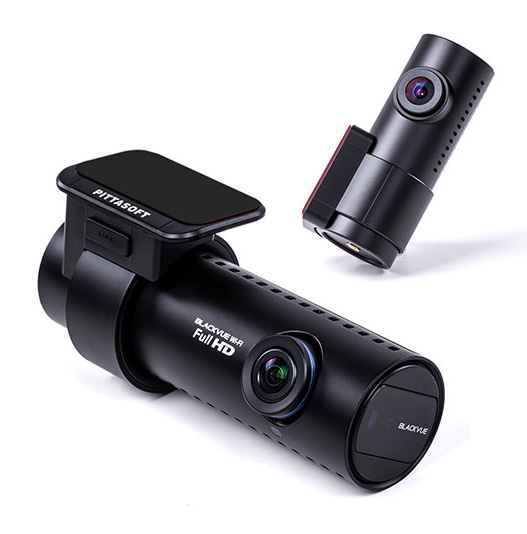 I think most of us have watched dashcam videos at some point – Meteorites exploding over a city, crazy drivers on the road, and the occasional aviation disaster just to name a few. There is even a website dedicated to dashcam accident videos. BlackVue was kind enough to ship was a DR650GW-2CH, the successor to the DR550GW-2CH reviewed by us a few years ago. In addition to the camera kit, we also received the Power Magic B-100 kit to go with it.
I think most of us have watched dashcam videos at some point – Meteorites exploding over a city, crazy drivers on the road, and the occasional aviation disaster just to name a few. There is even a website dedicated to dashcam accident videos. BlackVue was kind enough to ship was a DR650GW-2CH, the successor to the DR550GW-2CH reviewed by us a few years ago. In addition to the camera kit, we also received the Power Magic B-100 kit to go with it.
You could say I am a little late to the dashcam party, the truth is that I was a little slow to the realisation to the potential value. I mean, my beloved Saab did get sideswiped by a taxi while it was parked (no they didn’t leave a note and the distinctive yellow and green paint on the paintwork left me no doubts at all). Amongst other not-at-fault accidents, it was eventually written off by having a pretty large branch falling on it. On average I drive between 20,000 to 40,000km a year, thinking back, some of the miraculous near misses on the road would have made for interesting footage. Fast forward many years, let’s see what the DR650GW and the B-100 can do together.
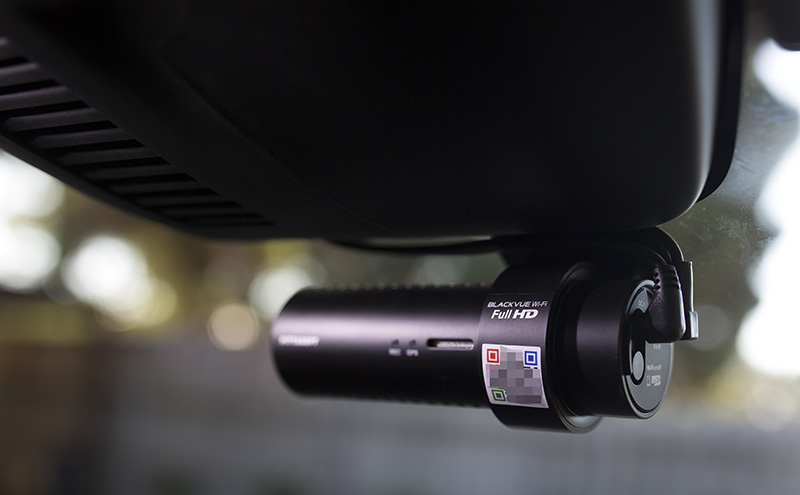 First Impressions
First Impressions
The DR650GW-2CH comprises of two modules, the larger front camera and a smaller rear camera. The front camera module is a fraction larger than the diameter of an Australian fifty cent coin (32mm), and the rear camera smaller than a twenty cent coin (28mm). Both are in a low key all black finish except for the pretty prominent QR code on the front camera. Size wise the front camera reminds me of a short stoogie, thick and stubby. The rear camera comes in a bit slimmer and at about half the length of the main camera, understandably it goes without needing to house all the smarts.
In a standard car the front camera could conceivably be “hidden” from the driver’s view if mounted in the penumbra of the rear view mirror. In my current steed, a 2016 Mazda CX-5 Akera, that area of the windscreen is dominated by sensors so the BlackVue had to be mounted immediately below the sensor suite compartment which meant it intrudes into my vision somewhat. Being a right hand drive car, the buttons, plugs and microSD are all facing the driver side. The WiFi indicator however is facing the passenger side. A 16Gb microSD card came with this unit.
The B-100 is a battery pack to protect the car’s battery until a set voltage cutoff value. The B-100 can power the BlackVue for an additional 8 hours on it’s own. Not huge, not small, just a decent size that is easily mounted in a car and out of sight. It is pretty much a set and forget kind of kit once you configure at what voltage you want it go onto internal battery power. There is an USB port for a cable out to charge a device although that would depend on where the B-100 is stashed.
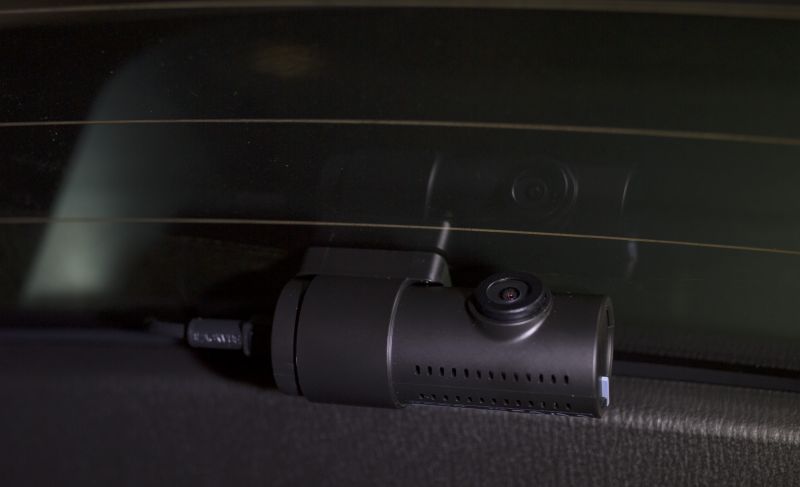 Installation
Installation
The installation of the kit is straightforward. In the simplest fashion, connect the power cable, connect the rear camera channel, plug in the DC power lead to your cigarette lighter. The kit comes with plenty of mounting tape and cable management clips, and that is where things get a bit more funky – installing the kit *neatly*.
Given auto electrics has never been one of my strong points, not to mention the ability to not destroy the car interior while tucking the cables out of sight, I opt for a professional installation. I approached Street Sound & Vision (SSV) Mitcham to get the job done. Sang and his team fitted me in their busy schedule pretty quickly and got the job done. I was told that it would be a couple of hours to get the job done, and Sang suggested I get myself a coffee across the road. In the end the installation took a shade under 2 hours to complete and without incident, the guys even tidied up all the rubbish afterwards.
Cables were run out of sight under the trim as much as possible, the B-100 disappeared next to the fuse box. At handover time they mentioned that the older version of the app on their phone would not talk to the unit, but everything was installed and working. Also they commented that the packaging on my units are a little different to the ones they are currently stocking so that would explain why their phone would not connect.
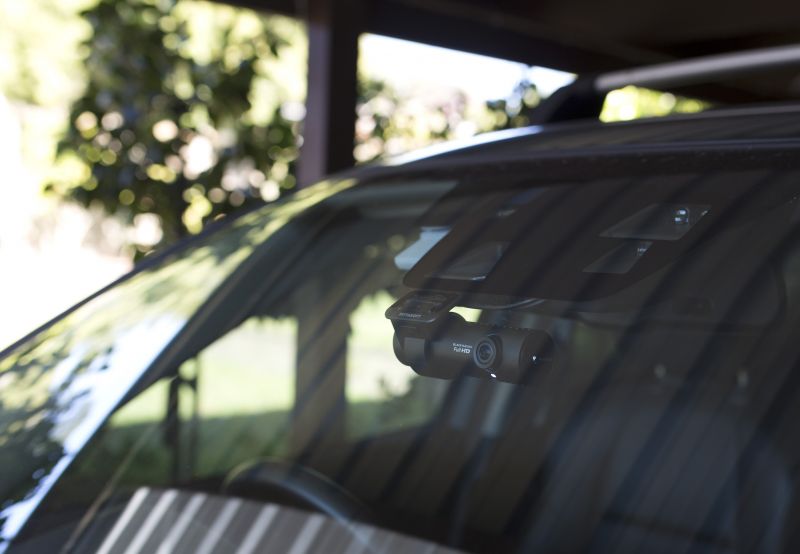 In Action
In Action
The most basic operation of the BlackVue kit is to start your car and drive. The sensors in the BlackVue will automatically detect when the car is in motion and announce that parking mode is switched off. This usually takes about 10 seconds to kick in. More about parking mode later. The BlackVue will record to the microSD card continuously until it runs out of storage space, at which point it will overwrite the oldest file first. A small blue LED indicates GPS lock and a blinking red LED indicates that the unit is recording. Both the front and rear cameras have a white LED to indicate their power on status at a glance.
To configure the DR650GW-2CH requires downloading an app and wifi enabled. This particular unit supports BlackVue Cloud which requires the BlackVue C app from your respective app store. The BlackVue broadcasts an SSID of the model number with the default password of “BlackVue” – something that one should change pretty quickly.
Launch the app will remind you every time not to view videos and drive at the same time (actually it is a really surreal experience, highly not recommended for safety reasons). The app allows control over the BlackVue such as image quality and framerate, changing both to extend the amount of data retained on memory before it is overridden. Video are stored in one minute segments. At the highest quality, the 16GB microSD card will get you about 6 hours of footage.
According to the website, when parking mode is enabled then recording is only made if a motion in the video is detected or an impact is detected by the G-sensor. My experience shows that the BlackVue seems to be recording regardless, whether this is something to do with the existence of the B-100 or not I am not sure. It does not compute that having a battery power source should change the behaviour of the parking mode though. Officially in parking mode, the BlackVue will store footage from 5 seconds before to 55 seconds after the G-sensor is triggered.
The manual states that the DR650GW series only supports up to 64GB memory cards. The FAQ on the website says 128GB with official BlackVue cards and some caveats around what is used to format the card. The card must be formatted in FAT32. I put in a Samsung EVO+ 64GB microSD and it has been working flawlessly.
Depending on the lighting conditions, the two cameras are fairly discreet from outside the car. There is a white security LED that shows their location but this can be turned off in configuration.
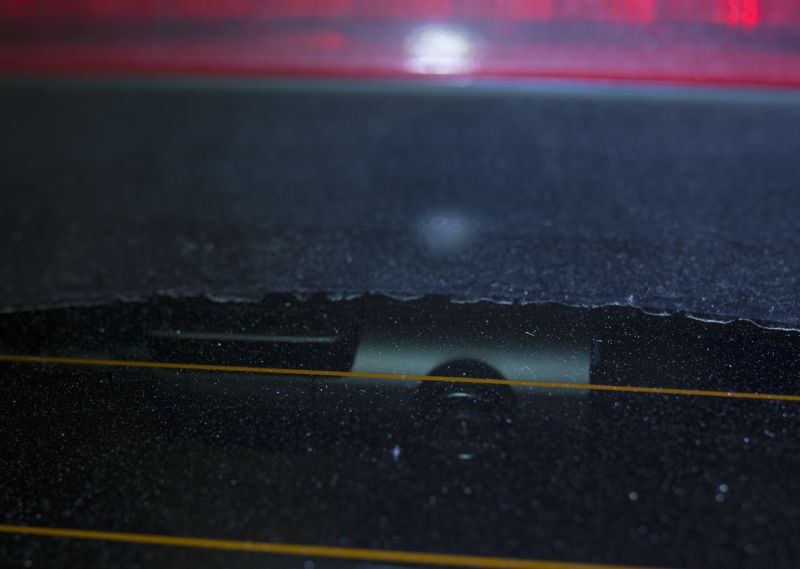 Configuration
Configuration
This section is reviewed on an Android device. Aside from a little initial confusion over which app to use, the connection to the dashcam was pretty easy. Connect to the unit and a list of available videos are presented in date sorted order.
Configuration can only be done after a connection is made to the unit. Changing the settings requires the BlackVue to reboot, which is triggered automatically. Once the unit is restarted you will need to reconnect to it. It makes for a clunky user experience especially when a reboot may be needed a few times as you move through the screens. On the bright side, once it is configured there should be little reasons to go back into configuration. For me one of the reasons is to go in and disable the internal mic for privacy reasons; the other being firmware updates.
Interestingly when launching the app, it looks for the latest version rather than being done through Google Play. Initially using the app was a dicey affair, despite having a rock solid WiFi connection to the unit it would come back with “check wifi signal” after taking forever to try and connect. Eventually I figured out that I just need to make my phone OS forget the WiFi connection and it would work every time. Sadly I have to make it forget that connection before connecting to the unit on WiFi every time.
A nice option when viewing videos in the app is that the screen is split between the actual footage and a moving map of the route taken along with the speed of the vehicle. The videos are embedded with date, time, speed of vehicle, model of the BlackVue and the recording mode, e.g. FHD or HD.
Alternately, the supplied microSD card comes with software for both Windows and Mac to run the configuration.
Footage Quality
The front camera with the Sony EXMOR CMOS sensor is capable of recording at 1920 x 1080@30fps, the rear camera is “just a” CMOS sensor with up to 1280 x 720@30fps. Right off the bat it is understandable that the two camera will return different quality videos. Also taking into account the viewing angles (front camera – Diagonal 129°, Horizontal 103°, Vertical 77°, rear -Diagonal 129°, Horizontal 108°, Vertical 57°), there will be some distortion in the image especially as you move away from the center of the frame.
If you are expecting cinematic quality footage then you are going to be disappointed, but on the other hand it is not the purpose of the BlackVues. Under a variety of conditions the units managed to capture usable footage, be it sunny, cloudy, rainy or night. Highlights can be blown out depending on the conditions, but the details are there once you are within range of the vehicles around you.
What the BlackVue is good for is the capture incidences occurring to front or rear of your vehicle. Details such as license plates tend to be lost as the distance from camera to target increases. However if another object is close enough to make contact then there is sufficient quality to use as evidence.
Cloud Connection
One of the key features with the DR650GW is the “BlackVue Over the Cloud” – connecting the unit to the “cloud” and allow you to remotely see what it is seeing, where it is currently and real-time alerts when the G-sensor is triggered. You can even opt to view and store the footage online as a backup.
It get it working, the unit needs to have a WiFi connection – either an Access Point that is close by, or a mobile hotspot. A fixed access point kind of defeats the purpose for a vehicle. In Australia having a dedicated mobile hotspot to leave in the car seems a bit extravagant considering the cost of the plans. It comes down to whether it is a necessity for where you car is going to be left unattended.
Gripes
There are a few gripes after using the BlackVue DR650GW-2CH for a fortnight. None of them are deal breakers but a few are annoying when I have to deal with it. Firstly the app feels like a throw back to Windows 3.1 days, particularly with the “Quit after saving” and the “Quit without saving” buttons. It is just so old school.
The WiFi connection issue in the app is a pain to deal with, but now that I have found a workaround it is something I can just deal with. It would have probably driven someone with less technical knowledge to despair though.
The WiFi indicator is located on the passenger side which is not necessarily a bad thing as it is one less thing to distract the driver. It could just as well be placed next to the recording and GPS indicators though.
Lastly, this one is a bit petty but it annoyed the OCD in me. The large QR code is not put on straight, and being in line of sight was driving me a little batty early on.
Conclusions
The BlackVue DR650GW-2CH has a lot to offer, front and rear channels, built in GPS, WiFi and cloud connectivity and a low key “stealthy” design. The video quality is adequate and fit-for-purpose without being spectacular. From a hardware perspective it does the job and does it reasonably well. The mobile app and its quirks are a bit of a let down, but on the bright side, that can be easily improved. The cloud capabilities add a new dimension if an Internet connection is available.
The BlackVue DR650GW-2CH is available for around AUD$499 with a 16GB microSD and the Power Magic B-100 for around AUD$199 before installation. It is not the cheapest kit out there, but it is certainly less than the excess on my motor vehicle insurance. Given my previous experience with hit and run drivers, this can be viewed as an investment.
DigitalReviews would like to thank BlackVue for supplying the review units, and to SSV Mitcham for performing a fantastic job on the installation work.
Specifications
Channel: 2 Channels
Camera: Front -Sony EXMOR CMOS Sensor (2.4M pixels) | Rear -CMOS Sensor (1M pixels)
Resolution/FPS: Front -Full HD 1920 x 1080@30fps | Rear -HD 1280 x 720@30fps
Variable Image Quality: Highest / High / Normal
Angle of view: Front -Diagonal 129°, Horizontal 103°, Vertical 77° | Rear -Diagonal 129°, Horizontal 108°, Vertical 57°
GPS: Built-in
Wi-Fi: Built-in (802.11b/g/n (2.4-2.4835GHz)
Buttons: Wi-Fi on/off, Voice on/off, Format (Wi-Fi long key)
Security LED: Yes
Format: Yes
Storage: MicroSD™ card (16GB/32GB/64GB/128GB)
Video Format: MP4
Microphone: Built-in
Speaker: Built-in
LED: Front -Recording status, GPS, Wi-Fi, Security | Rear -Security
G-Sensor: Built-in
Back-up Battery: Built-in Super Capacitor
Record Mode: Normal Mode, Event Mode (G-Sensor), Parking Mode (G-Sensor, motion)
Input Voltage: DC 12V~24V
Operation Temperature: -20℃~60℃
Power Consumption: Max. 4.8W
Power Management: Optional Power Magic Pro
Colour / Size / Weight: Front -Black / L118.5mm x D36mm / 120g | Rear -Black / L67.4mm x D27.6mm / 30g
Software: Blackvue Viewer (Windows, Mac OS)
Application: Blackvue App (Android, iOS, Windows /RT)



